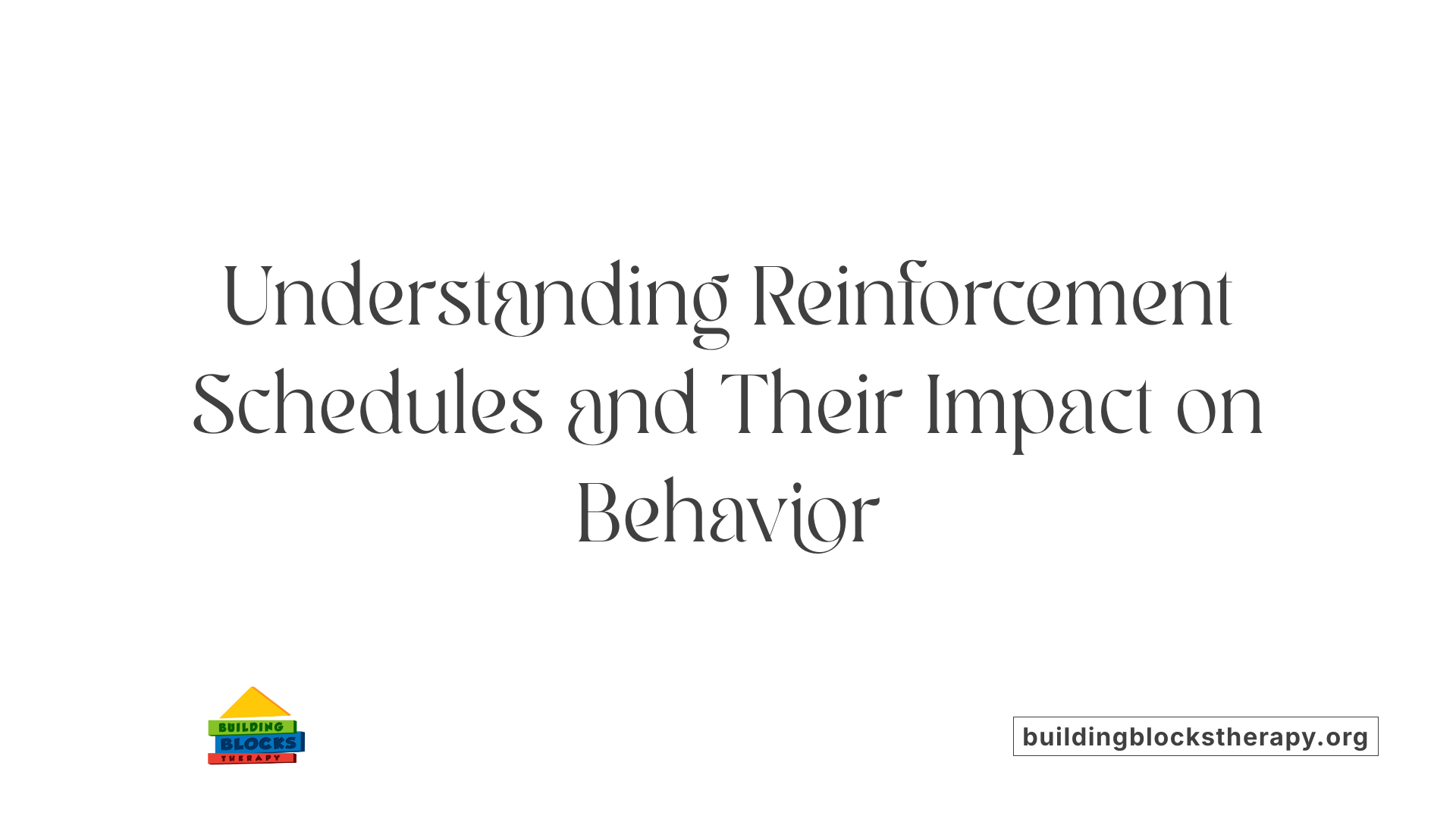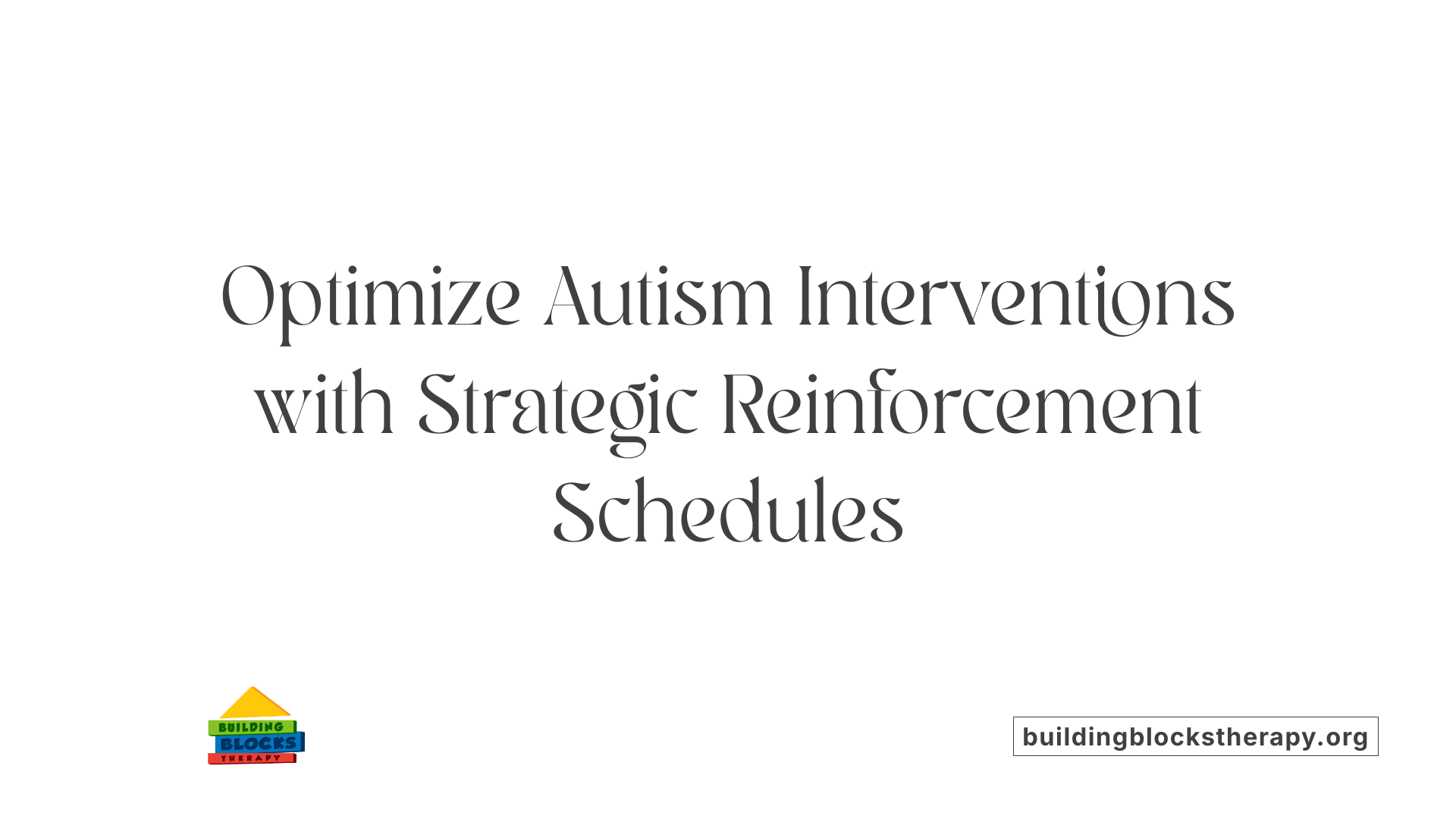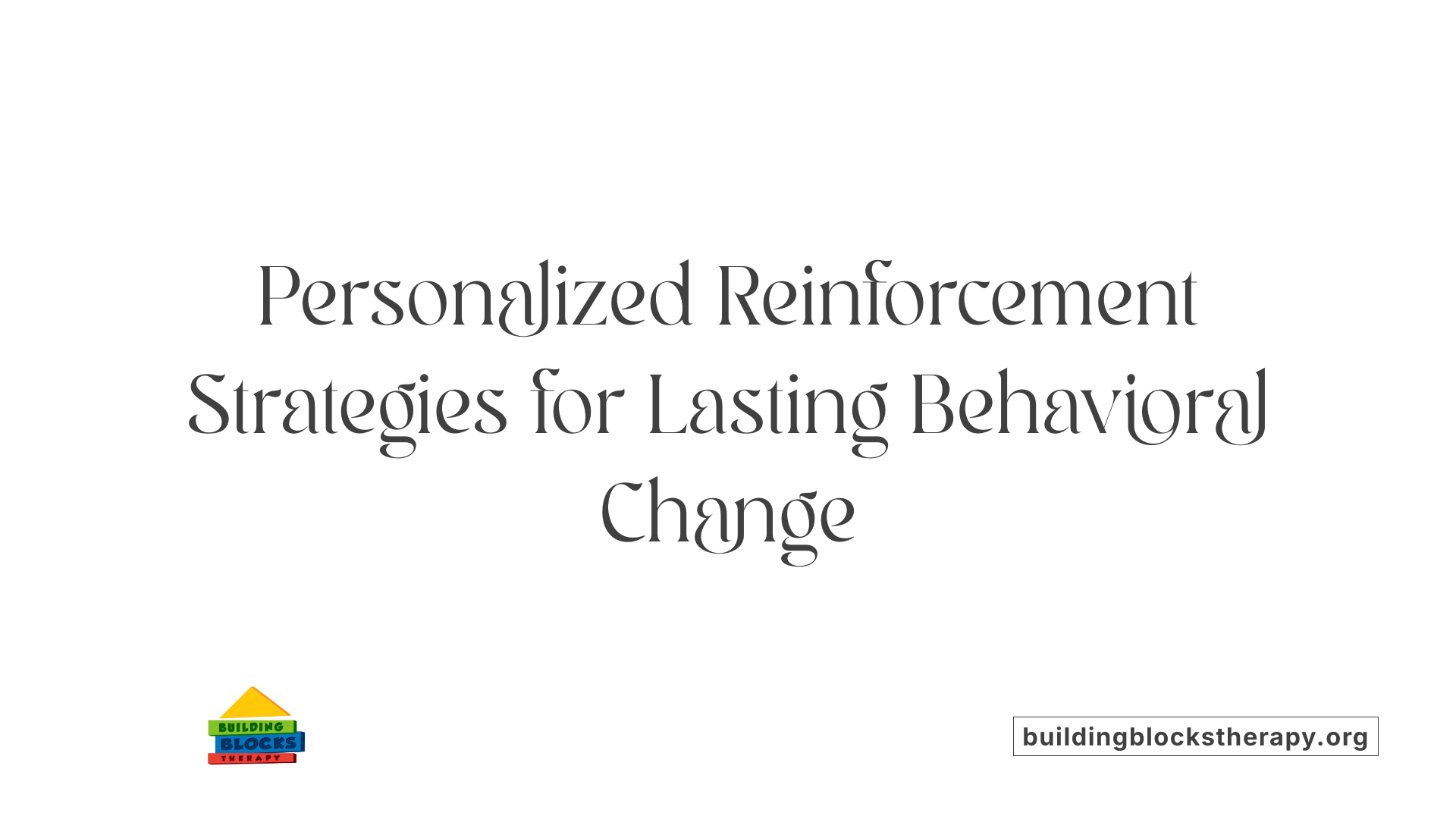Understanding Reinforcement and Its Impact on Behavior
Reinforcement is a foundational principle in behavioral therapy, especially for children with autism. It involves providing a consequence following a behavior that increases the likelihood of that behavior occurring again. By systematically applying reinforcement, caregivers and therapists can help replace problematic behaviors with more appropriate ones, facilitating growth and learning in children with autism. The art of using reinforcement effectively lies in understanding the different schedules of reinforcement and tailoring them to meet individual needs.
Fundamentals of Reinforcement Schedules and Their Influence on Behavior
 Reinforcement schedules are strategies used to determine when and how often reinforcement occurs to strengthen desired behaviors especially in children with autism. These schedules are primarily categorized into continuous and partial reinforcement, each serving different purposes during behavioral development.
Reinforcement schedules are strategies used to determine when and how often reinforcement occurs to strengthen desired behaviors especially in children with autism. These schedules are primarily categorized into continuous and partial reinforcement, each serving different purposes during behavioral development.
Examples of reinforcement schedules include fixed ratio, variable ratio, fixed interval, and variable interval schedules. In fixed ratio schedules, reinforcement is given after a set number of responses. This often produces a high and steady response rate, making it effective for encouraging consistent behavior. For example, giving a sticker after every five correct responses motivates repeated efforts.
Variable ratio schedules reinforce a behavior after an unpredictable number of responses, which mimics gambling. This unpredictability tends to produce a high, steady rate of responding because the individual remains engaged, expecting reinforcement at any response. An example would be providing a token after a random number of correct responses.
Fixed interval schedules involve reinforcing a behavior after a specific amount of time has passed. This often results in a response pattern where behavior increases as the reinforcement time approaches but decreases right after it is delivered, creating a scalloped pattern. For example, waiting to praise a child exactly 10 minutes after they start a task.
Variable interval schedules reinforce behaviors after unpredictable time intervals, leading to a consistent but moderate level of responses. This schedule encourages patience and steady behavior because the reinforcement timing is unpredictable.
The influence of these schedules manifests in the way behaviors are performed and maintained. Fixed ratio and fixed interval schedules tend to produce predictable response patterns, while variable schedules generate more consistent and resilient behaviors over time. Partial reinforcement, especially variable schedules, also makes behaviors more resistant to extinction, which is vital for long-term skill maintenance.
| Schedule Type | How Reinforcement Is Delivered | Effect on Behavior | Practical Use Cases |
|---|---|---|---|
| Fixed Ratio | After specific responses | High, steady response rate | Encouraging frequent responses (e.g., token systems) |
| Variable Ratio | After unpredictable responses | Consistent, high responses | Maintaining motivation over time |
| Fixed Interval | After specific time periods | Response pattern with bursts near the time interval | Shaping timed behaviors |
| Variable Interval | After unpredictable time periods | Moderate, steady response | Fostering patience and persistence |
Choosing the right reinforcement schedule is essential for effective behavior change. Gradually shifting from continuous to variable schedules helps in generalizing skills and maintaining motivation, especially in children with autism focused on skill acquisition and reinforcement resilience.
Applying Continuous Reinforcement for Rapid Skill Acquisition
 A continuous schedule of reinforcement (CRF) involves providing reinforcement after every correct response from the child. This approach is highly effective for establishing new behaviors because it clearly links the desired action with a rewarding consequence. When teaching children with autism, especially for unfamiliar or difficult skills, CRF accelerates learning by consistently motivating the child.
A continuous schedule of reinforcement (CRF) involves providing reinforcement after every correct response from the child. This approach is highly effective for establishing new behaviors because it clearly links the desired action with a rewarding consequence. When teaching children with autism, especially for unfamiliar or difficult skills, CRF accelerates learning by consistently motivating the child.
Typically, CRF is used during the initial stages of skill teaching. For example, if a child is learning to say a new word, giving a sticker or praise every time they correctly pronounce it encourages quick acquisition. This consistent reinforcement helps build a strong association between the behavior and the reward.
However, maintaining a CRF schedule over an extended period is not practical. It can sometimes lead to satiation, where the child loses interest in the reinforcement. Therefore, once the skill is learned, therapists often gradually shift to intermittent schedules to promote skill maintenance and prevent dependency on constant reinforcement.
Using CRF creates a solid foundation for building more complex and generalized skills. It ensures that initial learning is quick and effective, setting the stage for subsequent reinforcement strategies that foster long-term persistence.
Strategic Implementation of Reinforcement Schedules in Autism Interventions
 When applying reinforcement strategies to support children with autism, understanding how to implement and tailor different schedules is crucial for effective behavior change.
When applying reinforcement strategies to support children with autism, understanding how to implement and tailor different schedules is crucial for effective behavior change.
Initially, using continuous reinforcement — providing a reward each time the target behavior occurs — helps children quickly learn new skills. For example, giving a child a sticker every time they use words instead of aggressive gestures can reinforce speech.
As behaviors become more established, shifting to intermittent schedules like fixed ratio or fixed interval reinforces persistence and reduces satiation. Fixed ratio involves giving rewards after a set number of behaviors, such as every third correct response, while fixed interval provides reinforcement after a specific time period, such as after five minutes.
To promote variability and the acquisition of new responses, lag schedules can be employed. These involve delivering reinforcement after a specified number of responses or after response gaps, encouraging children to try different behaviors and expand their communication.
Visual aids, prompts, and error correction can support mastery during these schedules, ensuring that reinforcement effectively encourages generalization of skills.
Tailoring these schedules to each child's unique preferences and response patterns enhances their effectiveness. For instance, some children might respond better to tangible rewards, while others benefit from social praise or activities they enjoy.
Monitoring progress and adjusting reinforcement schedules accordingly supports sustained behavior change, helping children with autism develop more flexible and functional skills across different settings.
| Reinforcement Schedule | How It Works | Best Use Case | Additional Notes |
|---|---|---|---|
| Continuous | Rewards every response | Teaching new skills | Quick learning, risk of satiation |
| Fixed Ratio | Rewards after fixed number of responses | Maintaining behaviors | Encourages consistent response rates |
| Fixed Interval | Rewards after set time | Promoting patience | Useful when timing is important |
| Variable Ratio | Rewards after varying responses | Maintaining skills long-term | Sustains responding, less predictability |
| Variable Interval | Rewards after varying times | Maintaining response stability | Keeps responses steady |
| Lag Schedule | Rewards after certain response gaps | Increasing response variability | Promotes new responses |
Choosing the right reinforcement schedule and adjusting it based on ongoing assessment allows practitioners and caregivers to support meaningful learning and behavioral flexibility in children with autism.
Personalizing Reinforcement for Sustained Behavioral Change

How do I select and apply appropriate reinforcement schedules for individual children with autism?
To effectively support children with autism, it is important to tailor reinforcement strategies to their individual needs and responses. The process begins with assessing the child's current skill level, preferences, and specific behavioral goals.
Starting with continuous reinforcement—where a reward is given every time the behavior occurs—can help establish new skills quickly. This immediate and consistent feedback provides clarity and encourages learning.
Once the behavior is established, gradually moving to intermittent schedules, such as fixed ratio, fixed interval, variable ratio, or variable interval, can help maintain the behavior over time. These schedules deliver reinforcement less frequently, which prevents satiation and fosters longer-lasting behavior.
In addition, reinforcement fading involves gradually decreasing the frequency of reinforcement, encouraging the child to perform behaviors in various settings and situations. This step is crucial for helping skills to generalize beyond therapy sessions.
Particularly beneficial are lag schedules of reinforcement, which reinforce responses that differ from the most recent behaviors. This technique increases response variability and can lead to a broader response repertoire, especially for children who tend to repeat the same behaviors.
Consistent monitoring of the child's reactions and preferences allows caregivers and therapists to adjust reinforcement schedules as needed. The goal is to keep reinforcement motivating and relevant, ensuring sustained behavioral improvements.
Overall, selecting and adjusting reinforcement schedules is an ongoing process that aligns with the child's development and learning context, fostering meaningful and durable behavioral change.
Maximizing Benefits Through Response Variability and Reinforcement Thinning
 Reinforcement schedules are essential tools in shaping behaviors, especially in children with autism. They help solidify positive behaviors and encourage response variability.
Reinforcement schedules are essential tools in shaping behaviors, especially in children with autism. They help solidify positive behaviors and encourage response variability.
Using different types of reinforcement, such as continuous and intermittent schedules, allows practitioners to support learning effectively. Continuous reinforcement, where rewards are given every time a behavior occurs, is excellent during initial skill training. It helps children quickly associate actions with positive outcomes.
As skills become established, switching to intermittent schedules—like fixed ratio, fixed interval, or variable ratio and interval—encourages responses to become more resistant to extinction. These schedules can be tailored to the child's needs, promoting sustained motivation and generalization of skills.
Variable schedules are particularly effective in increasing response variability. They make reinforcement unpredictable, which keeps children engaged and encourages the emergence of new or varied responses. This unpredictability helps children expand their response repertoire and adapt to different contexts.
Gradually thinning reinforcement, moving from frequent to less frequent reinforcement, helps children learn patience and maintain behaviors over time. It also supports resilience, making desirable behaviors more stable and less dependent on constant reinforcement.
In addition, lag schedules—delays before a response is reinforced—have been shown to increase response variability and promote the use of new responses. This approach can help expand a child's response class, encouraging more diverse behaviors.
Ultimately, strategic use and fading of reinforcement schedules foster robust learning, response diversity, and behavior maintenance, empowering children with autism to develop adaptable and resilient skills.
Strategies for Sustained Behavioral Success
Effectively utilizing reinforcement schedules requires a nuanced understanding of how different patterns influence behavior. Initiating with continuous reinforcement lays a solid foundation, enabling children to acquire new skills rapidly. Transitioning to intermittent and variable schedules fosters persistence, response variability, and long-term maintenance of behaviors. Tailoring reinforcement types and timing to each child’s unique preferences and developmental level enhances engagement and effectiveness. By carefully managing reinforcement schedules—through planning, monitoring, and adapting—caregivers and therapists can significantly improve behavioral outcomes in children with autism, fostering independence and enhancing quality of life.
References
- "Scheduling" Positive Reinforcement to Improve Behavior
- Step 1.7 Select a schedule of reinforcement - ASD Toddler Initiative
- Positive Reinforcement in ABA Therapy - The Sutcliffe Clinic
- Using lag schedules to strengthen the intraverbal repertoires of ...
- Using a Lag Schedule of Reinforcement to Increase Response ...
- [PDF] Different Types of Reinforcement Schedules - Autism Internet Modules
- Why are Schedules of Reinforcement Important in ABA | Childwise
- Reinforcement in ABA: Key Principles and How They Work






